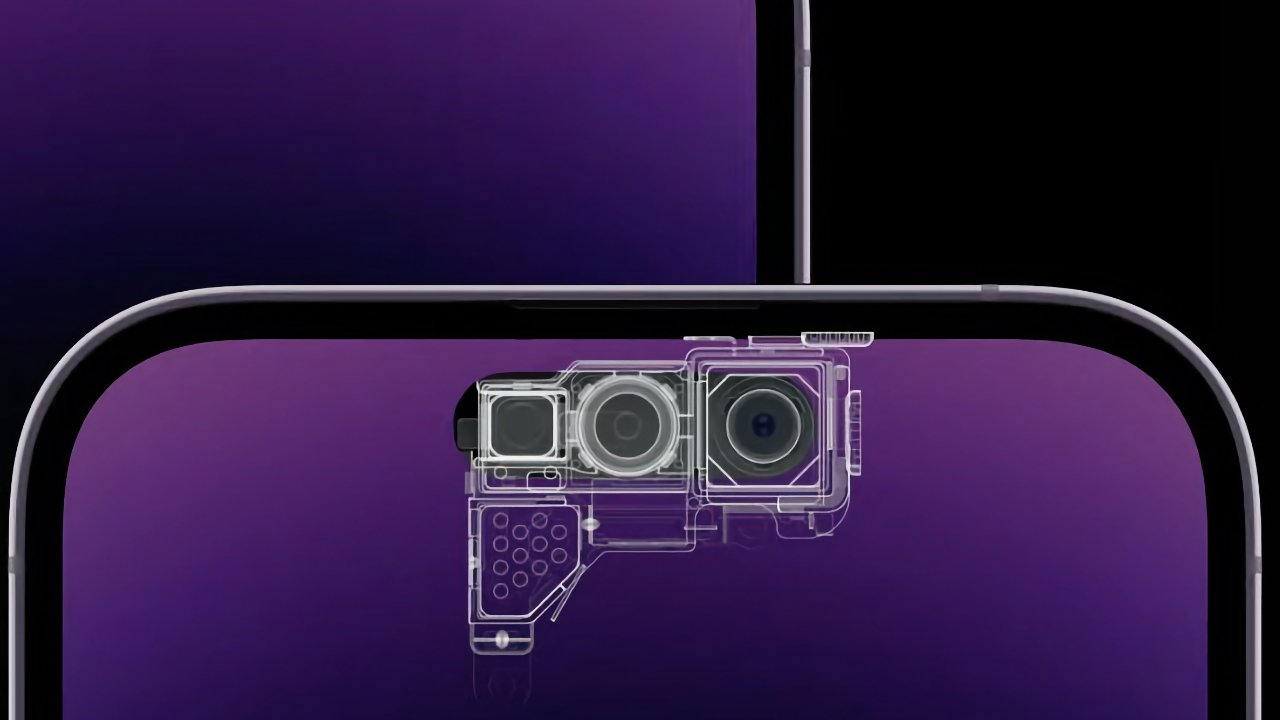One component under the iPhone 15 Dynamic Island is getting a redesign
A new supply chain report from analyst Ming-Chi Kuo declares that Apple is revamping its Dynamic Island feature to incorporate the iPhone's proximity sensor.

Detail from the current iPhone 14 Pro -- the proximity sensor is the unit at the bottom
The proximity sensor is the feature that turns off the iPhone screen when users are on a call and place the phone next to their ear. In the iPhone 14 Pro, the sensor was underneath the display, and just below the Dynamic Island.
In a tweet based on his industry sources, Kuo says that "in the iPhone 15 series, the proximity sensor is situated within the dynamic island, with almost no change to the Dynamic Island area."
There shouldn't be any noticeable difference for users. Apple is most likely doing it as a cost-saving measure in manufacturing.
Kuo says that it does make a difference to the technical details of the sensor. It will be a 940nm wavelength proximity sensor, "compared to 1380nm for the iPhone 14 Pro."
In this case, smaller does not mean worse. There should be performance advantages with the smaller wavelength, versus the older component.
This change is for the display on all of the iPhone 15 range. However, other display features such as always-on and ProMotion, will remain exclusive to the Pro models.
Read on AppleInsider

Detail from the current iPhone 14 Pro -- the proximity sensor is the unit at the bottom
The proximity sensor is the feature that turns off the iPhone screen when users are on a call and place the phone next to their ear. In the iPhone 14 Pro, the sensor was underneath the display, and just below the Dynamic Island.
In a tweet based on his industry sources, Kuo says that "in the iPhone 15 series, the proximity sensor is situated within the dynamic island, with almost no change to the Dynamic Island area."
There shouldn't be any noticeable difference for users. Apple is most likely doing it as a cost-saving measure in manufacturing.
Kuo says that it does make a difference to the technical details of the sensor. It will be a 940nm wavelength proximity sensor, "compared to 1380nm for the iPhone 14 Pro."
In this case, smaller does not mean worse. There should be performance advantages with the smaller wavelength, versus the older component.
This change is for the display on all of the iPhone 15 range. However, other display features such as always-on and ProMotion, will remain exclusive to the Pro models.
Read on AppleInsider

Comments